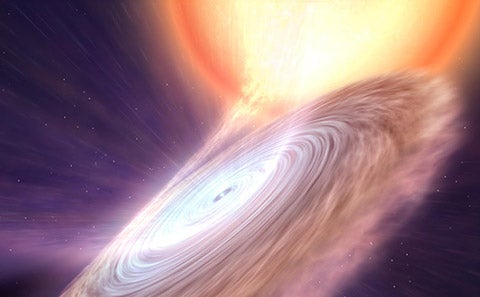‘Powerful warm wind’ seen blowing through the universe after neutron star devours its neighbour

Your support helps us to tell the story
From reproductive rights to climate change to Big Tech, The Independent is on the ground when the story is developing. Whether it's investigating the financials of Elon Musk's pro-Trump PAC or producing our latest documentary, 'The A Word', which shines a light on the American women fighting for reproductive rights, we know how important it is to parse out the facts from the messaging.
At such a critical moment in US history, we need reporters on the ground. Your donation allows us to keep sending journalists to speak to both sides of the story.
The Independent is trusted by Americans across the entire political spectrum. And unlike many other quality news outlets, we choose not to lock Americans out of our reporting and analysis with paywalls. We believe quality journalism should be available to everyone, paid for by those who can afford it.
Your support makes all the difference.Scientists have watched as a powerful, hot wind has been sent through the universe by a neutron star devouring its neighbour.
The discovery could help us learn more about some of the most extreme objects in the universe, the scientists who observed it say.
The hot wind emerged from a low-mass X-ray binary, or LMXB, which are a system that includes a neutron star or a black hole. They get their fuel from tearing material from a neighbouring star, devouring it in a process known as accretion.
Usually, when that happens, the systems become much brighter, in ways that can be observed by scientists.
They also throw material out into space, propelling it with the force of winds. But until now, scientists have only seen “warm” gas – the new study is the first time that they have seen “hot” and “cold” gas coming from a system of this kind.

That was possible because scientist have been waiting and preparing for such an eruption. The opportunity to watch the event using an array of the most powerful telescopes available on Earth and space arose when the system called Swift J1858 was found and behaved like a rare candidate.
“Eruptions like this are rare, and each of them is unique,” said Noel Castro Segura, from the University of Southampton, a lead author on the study. “Normally they are heavily obscured by interstellar dust, which makes observing them really difficult.
“Swift J1858 was special, because even though it is located on the other side of our galaxy, the obscuration was small enough to allow for a full multiwavelength study.”
Join our commenting forum
Join thought-provoking conversations, follow other Independent readers and see their replies
0Comments